Abstract
A subject's performance under a conditional-discrimination procedure defines conditional relations between stimuli: "If Al, then Bl; if A2, then B2." The procedure may also generate matching to sample. If so, the stimuli will be related not only by conditionality, but by equivalence: Al and Bl will become equivalent members of one stimulus class, A2 and B2 of another. One paradigm for testing whether a conditional-discrimination procedure has generated equivalence relations uses three sets of stimuli, A, B, and C, three stimuli per set. Subjects learn to select Set-B and Set-C comparisons conditionally upon Set-A samples. Having been explicitly taught six sample-comparison relations, A1B1, A1C1, A2B2, A2C2, A3B3,and A3C3, subjects prove immediately capable of matching the B- and C-stimuli; six new relations emerge (B1C1, B2C2, B3C3, C1B1, C2B2, C3B3). The 12 stimulus relations, six taught and six emergent, define the existence of three three-member stimulus classes, A1B1C1, A2B2C2 and A3B3C3. This paradigm was expanded by introducing three more stimuli (Set D), and teaching eight children not only the AB and AC relations but DC relations also-selecting Set-C comparisons conditionally upon Set-D samples. Six of the children proved immediately capable of matching the B- and D-stimuli to each other. By selecting appropriate Set-B comparisons conditionally upon Set-D samples, and Set-D comparisons conditionally upon Set-B samples, they demonstrated the existence of three four-member stimulus classes, A1B1C1D1, A2B2C2D2, and A3B3C3D3. These larger classes were confirmed by the subjects' success with the prerequisite lower-level conditional relations; they were also able to select Set-D comparisons conditionally upon samples from Sets A and C, and to do the BC and CB matching that defined the original three-member classes. Adding the three DC relations therefore generated 12 more, three each in BD, DB, AD, and CD. Enlarging each class by one member brought about a disproportionate increase in the number of emergent relations. Ancillary oral naming tests suggested that the subject's application of the same name to each stimulus was neither necessary nor sufficient to establish classes of equivalent stimuli.
Full text
PDF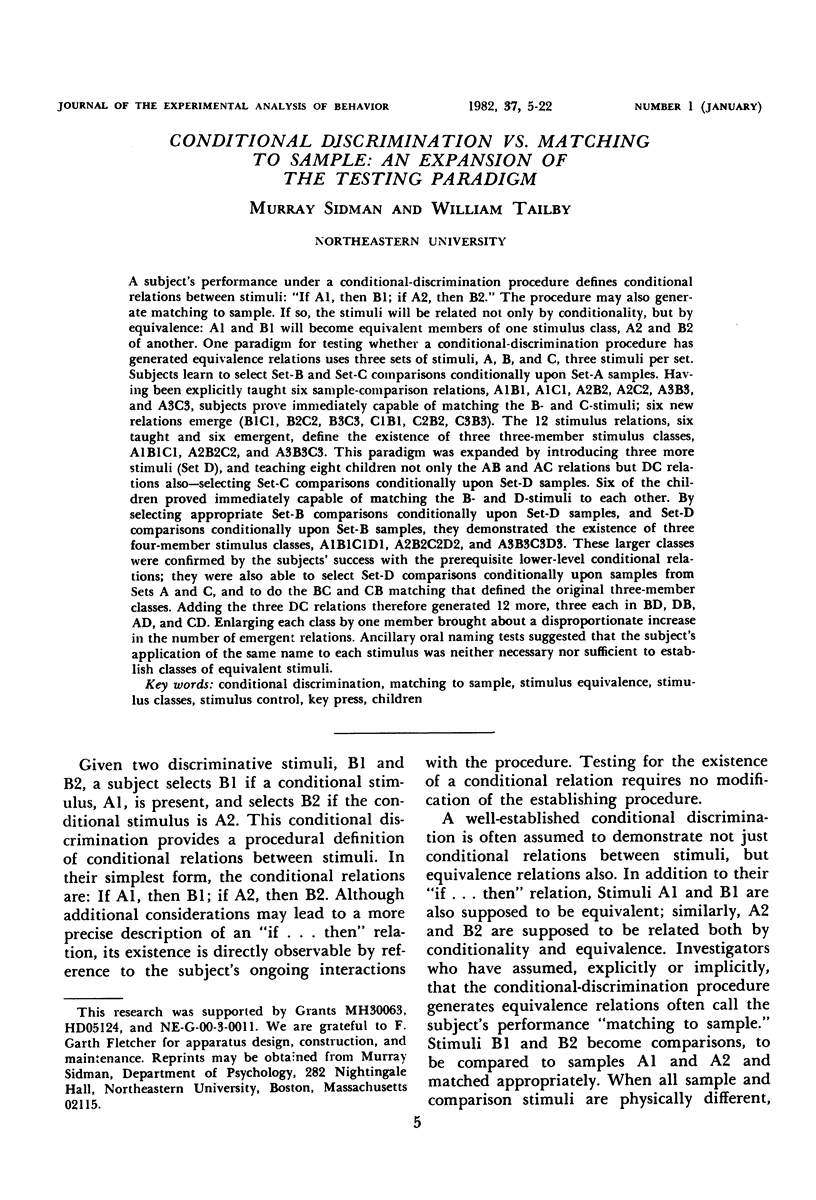
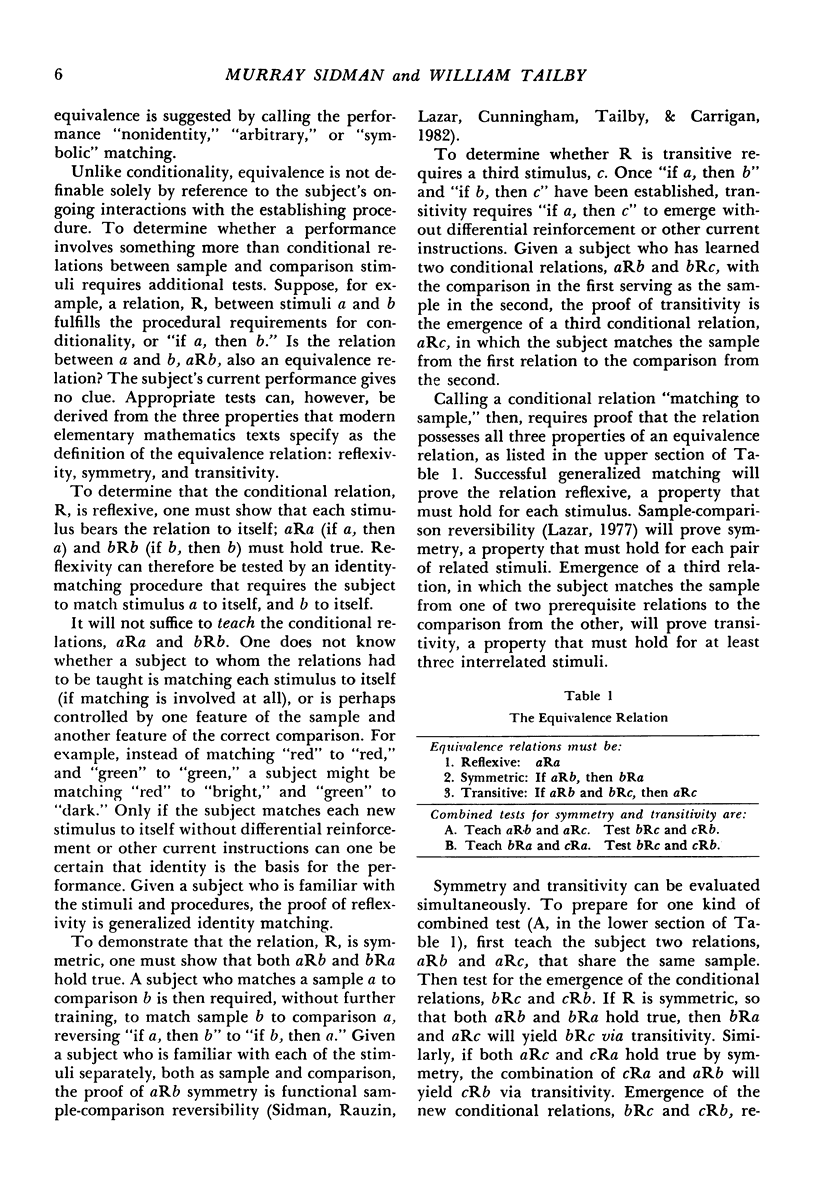
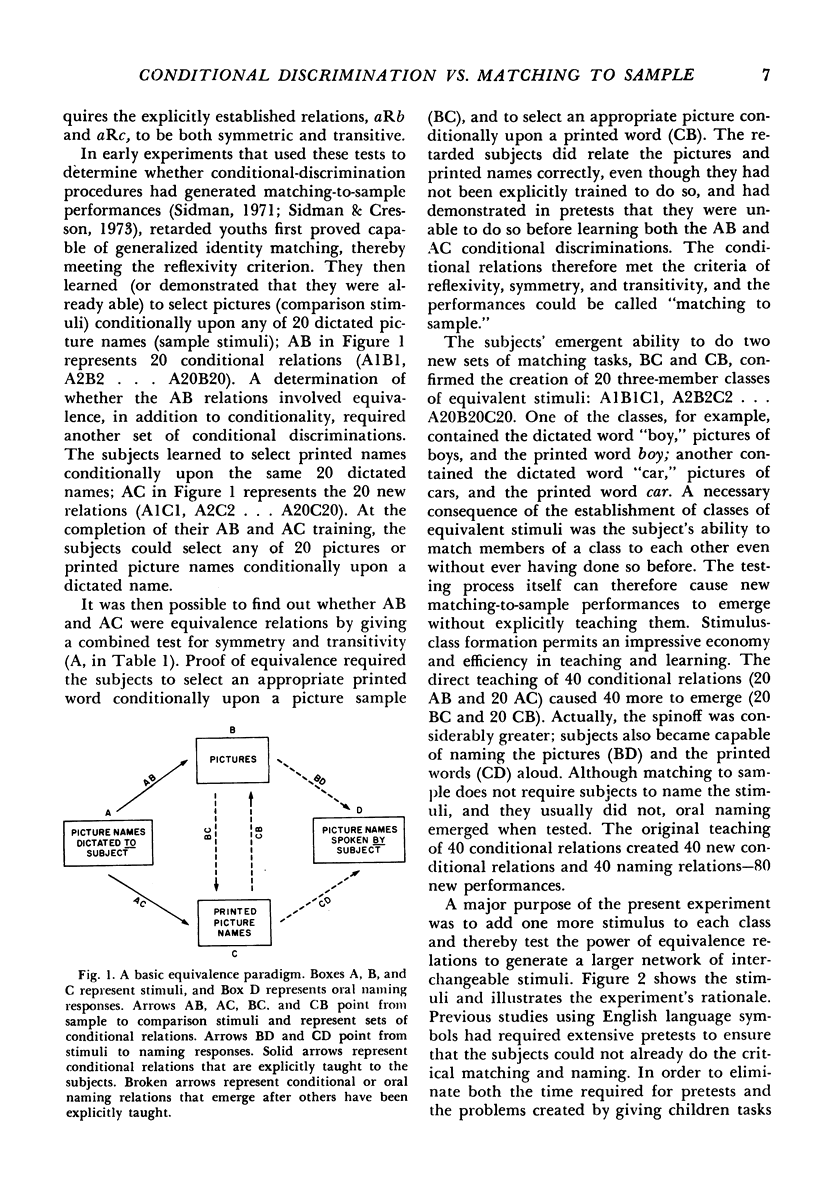
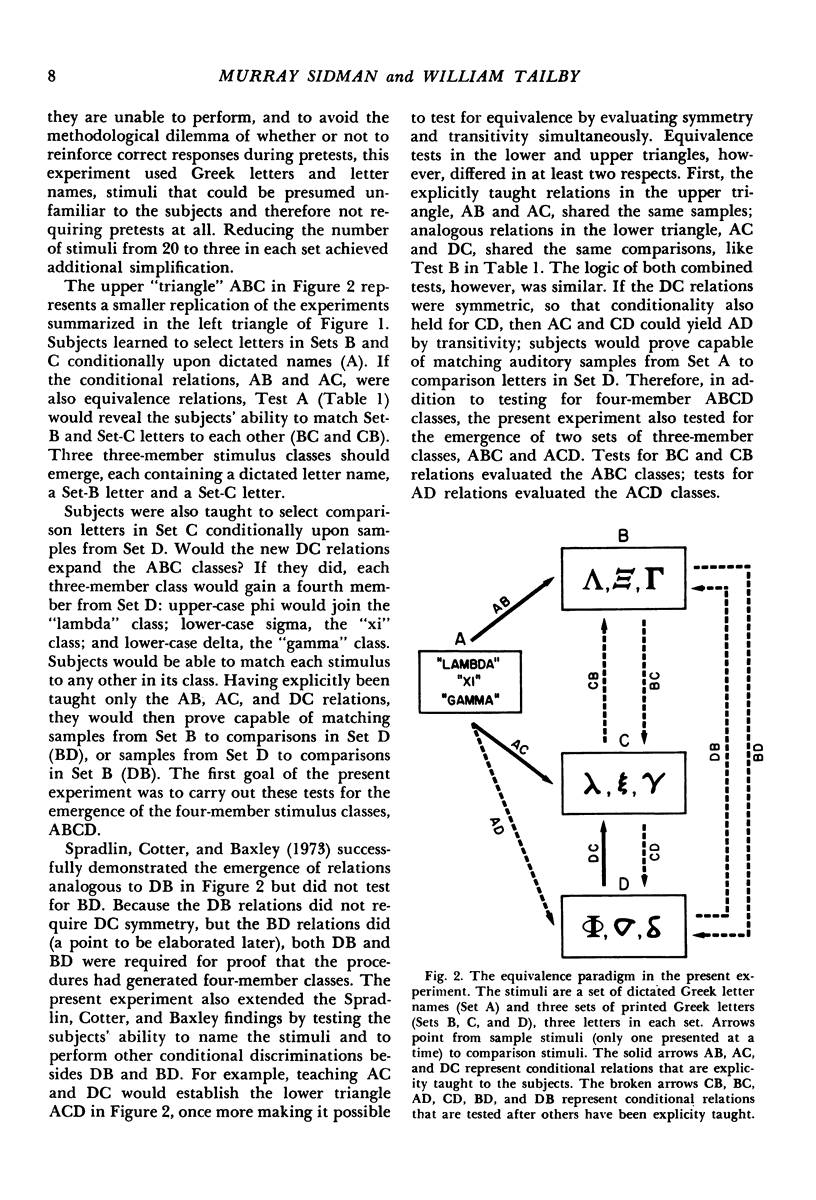
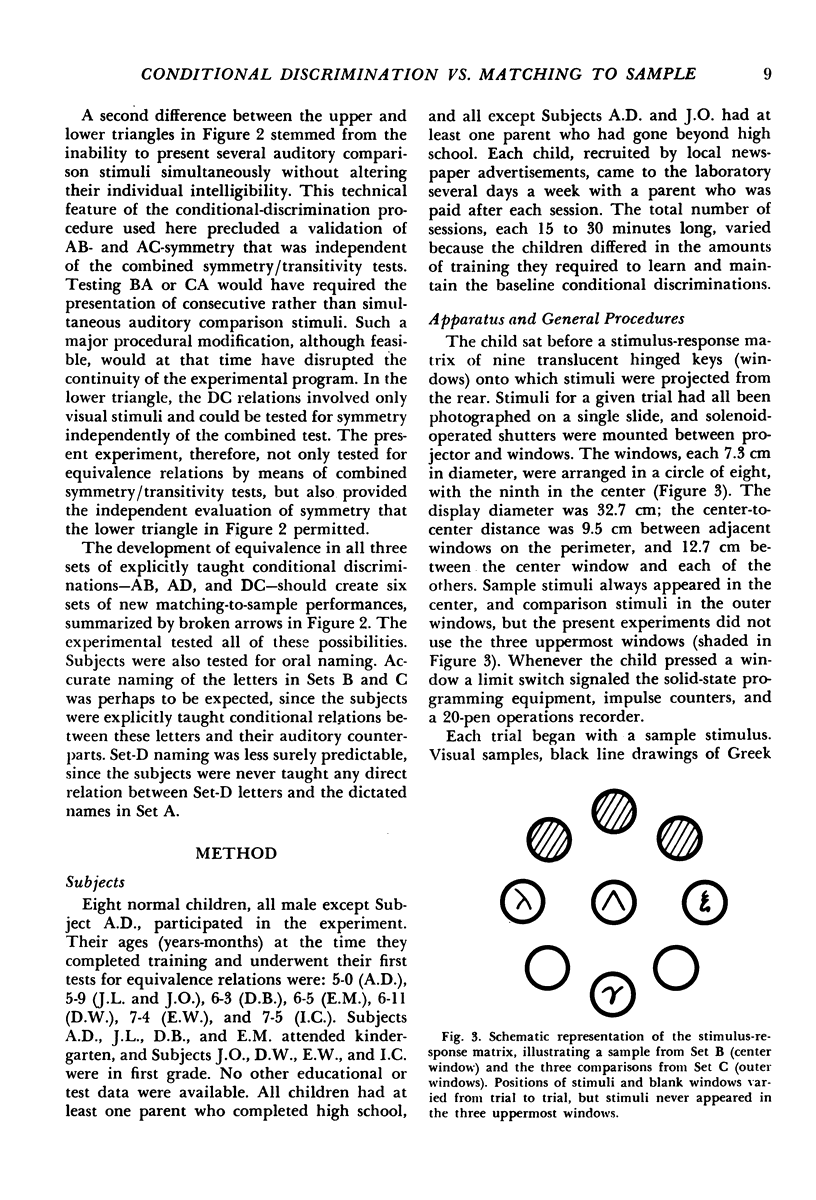
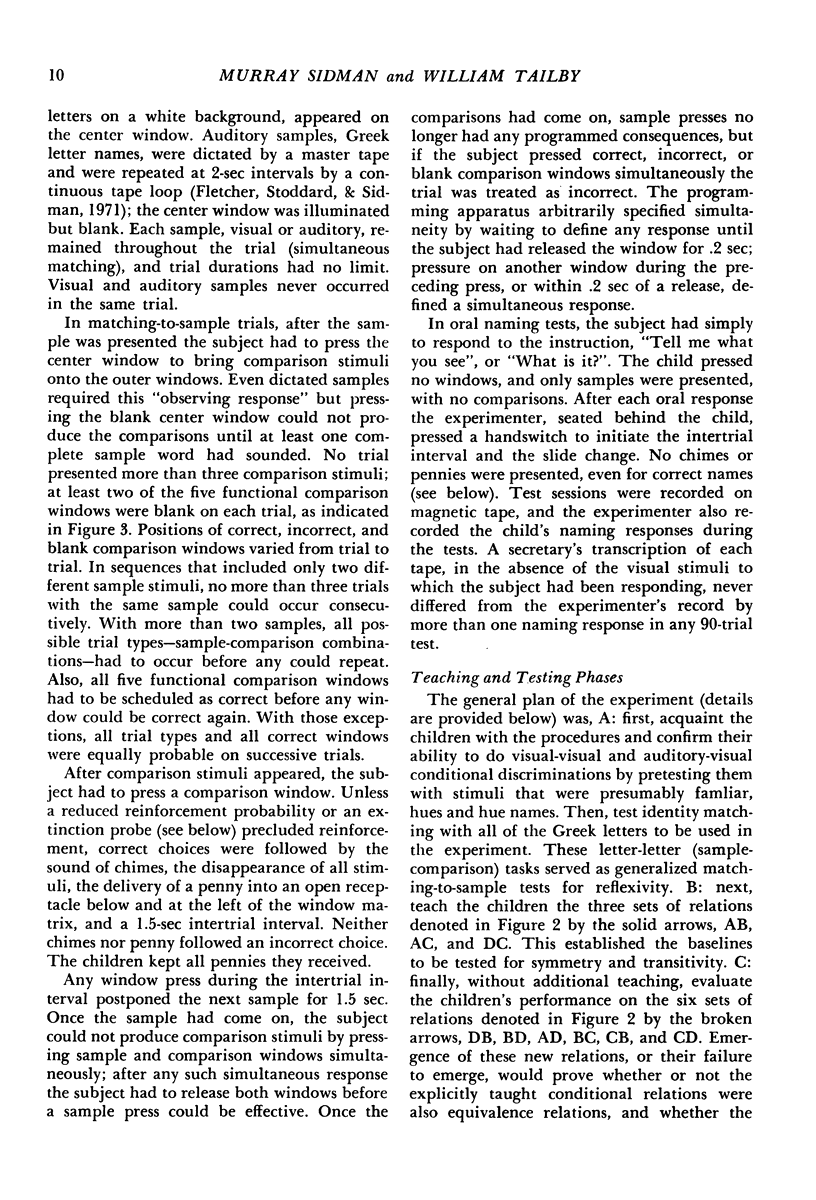
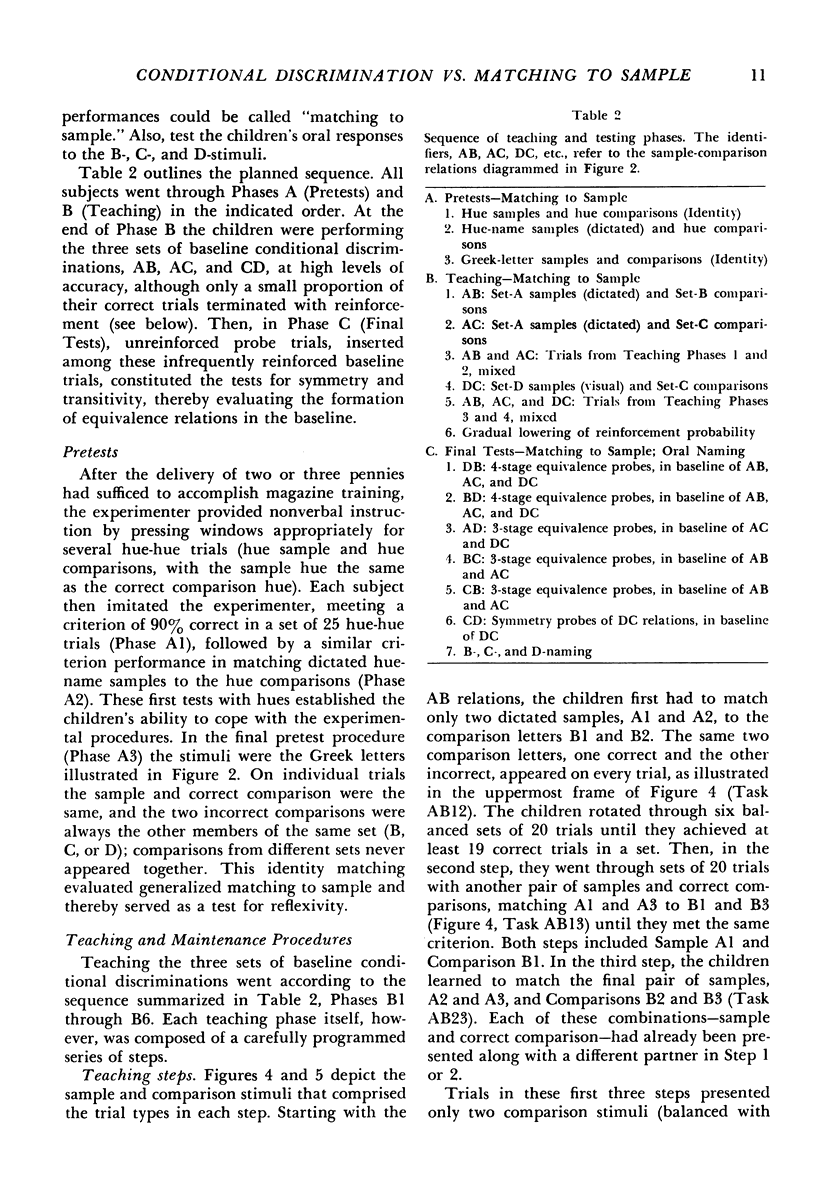
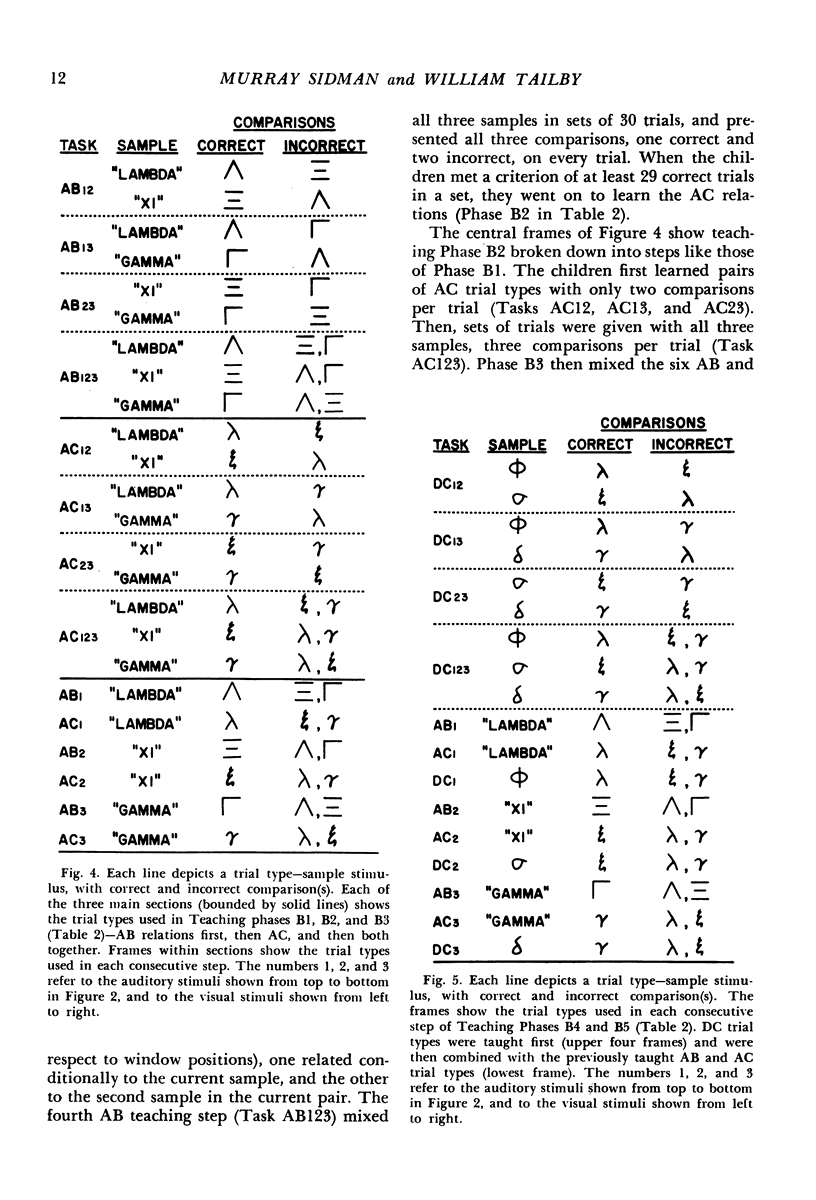
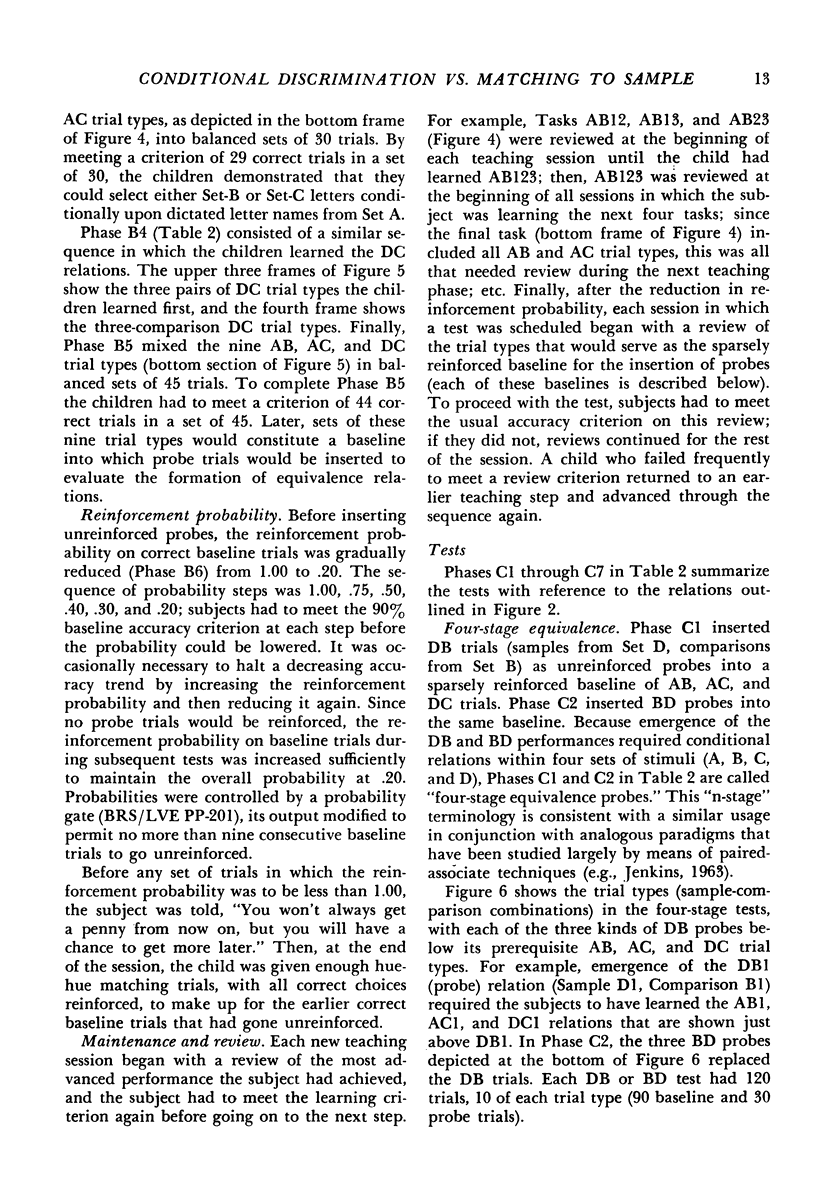
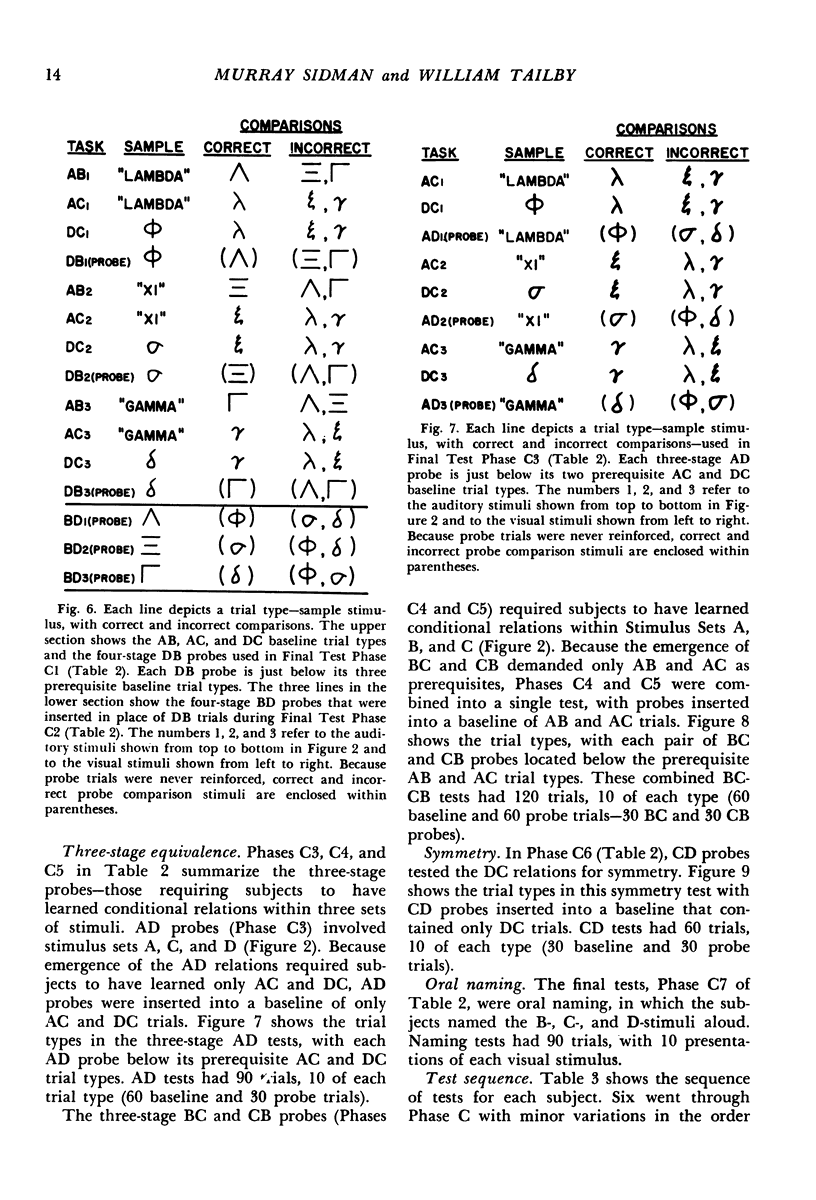
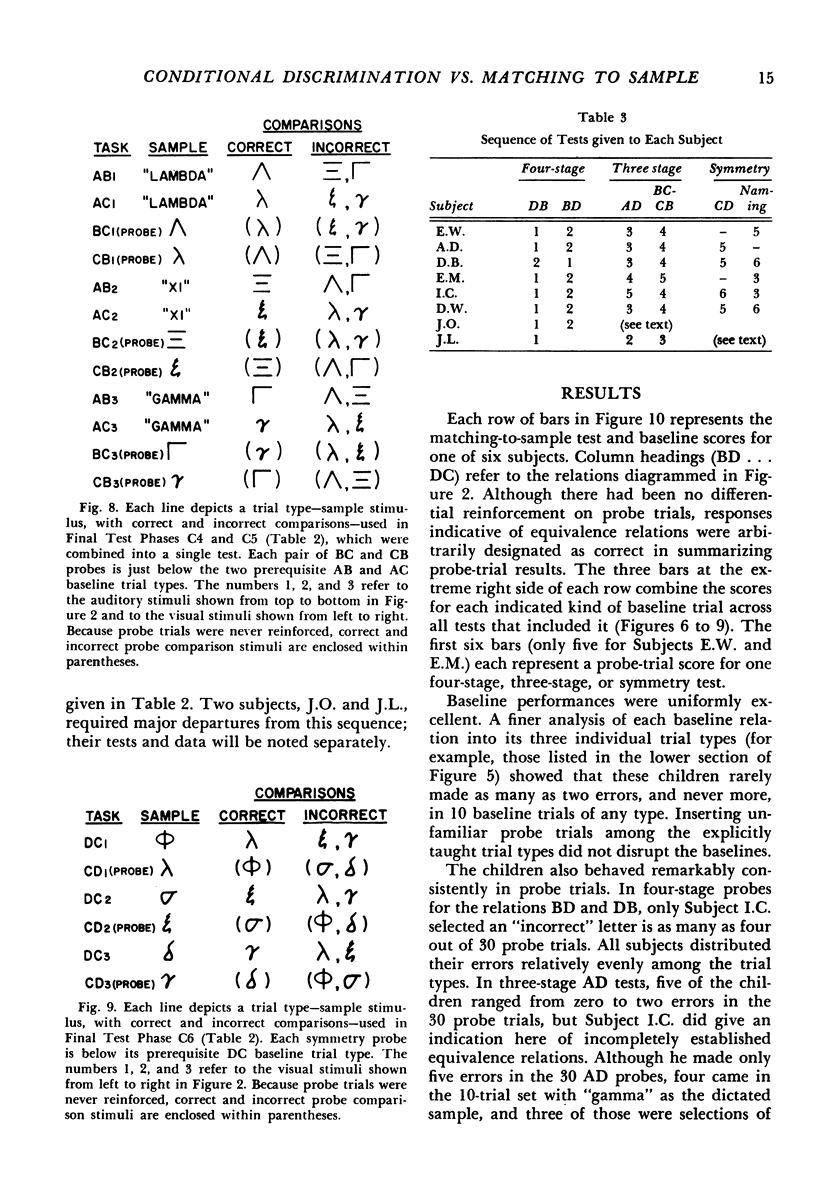
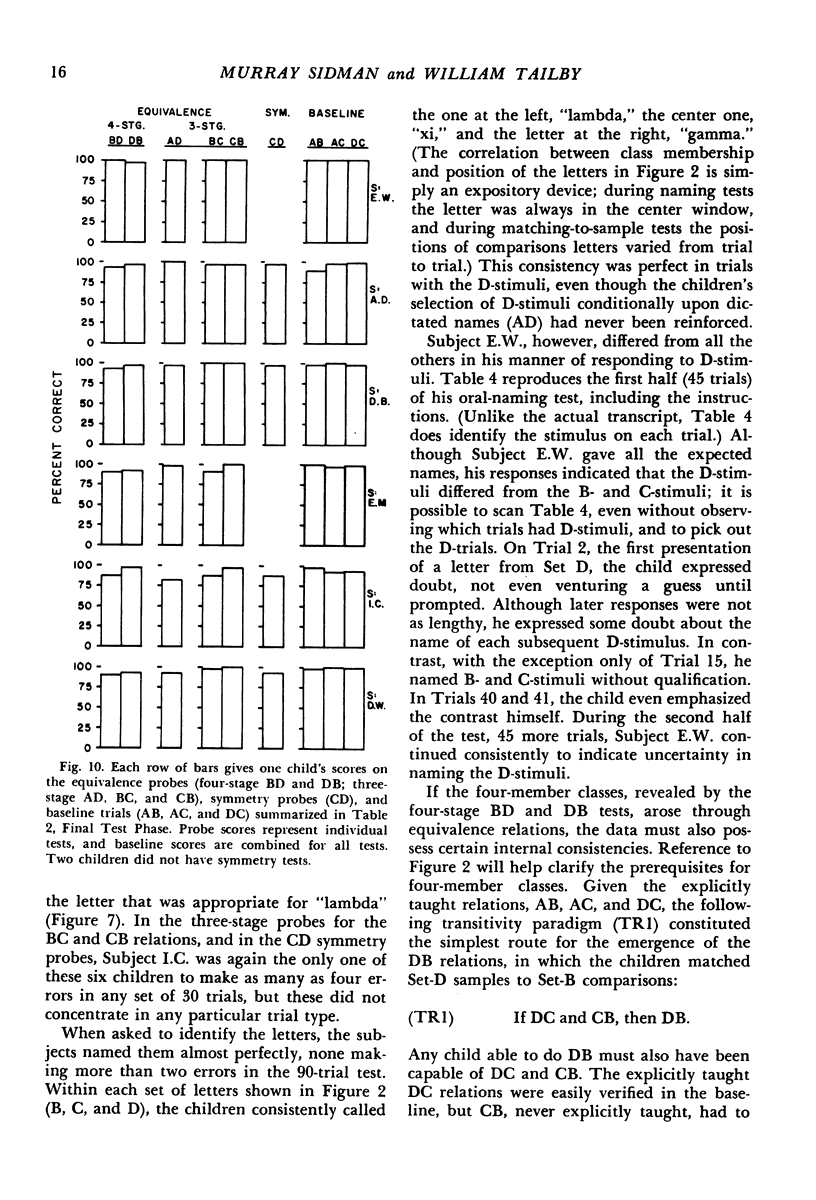
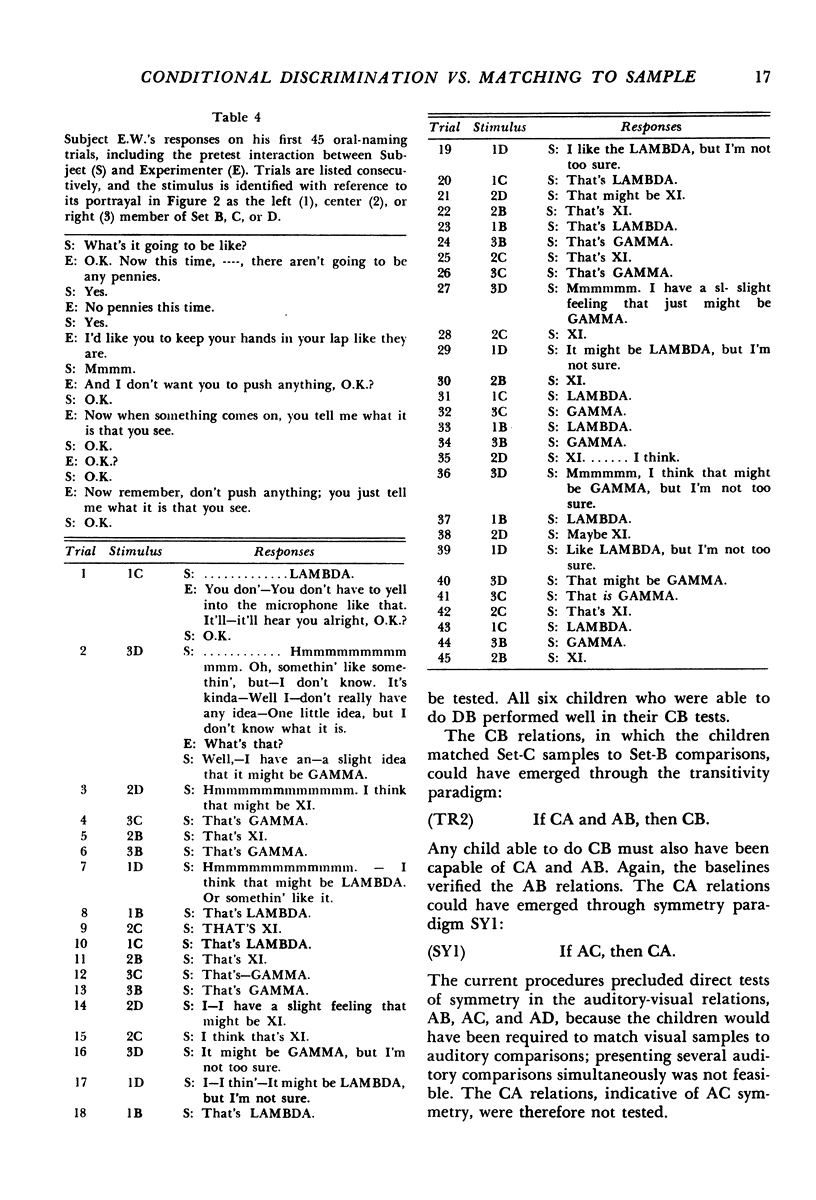
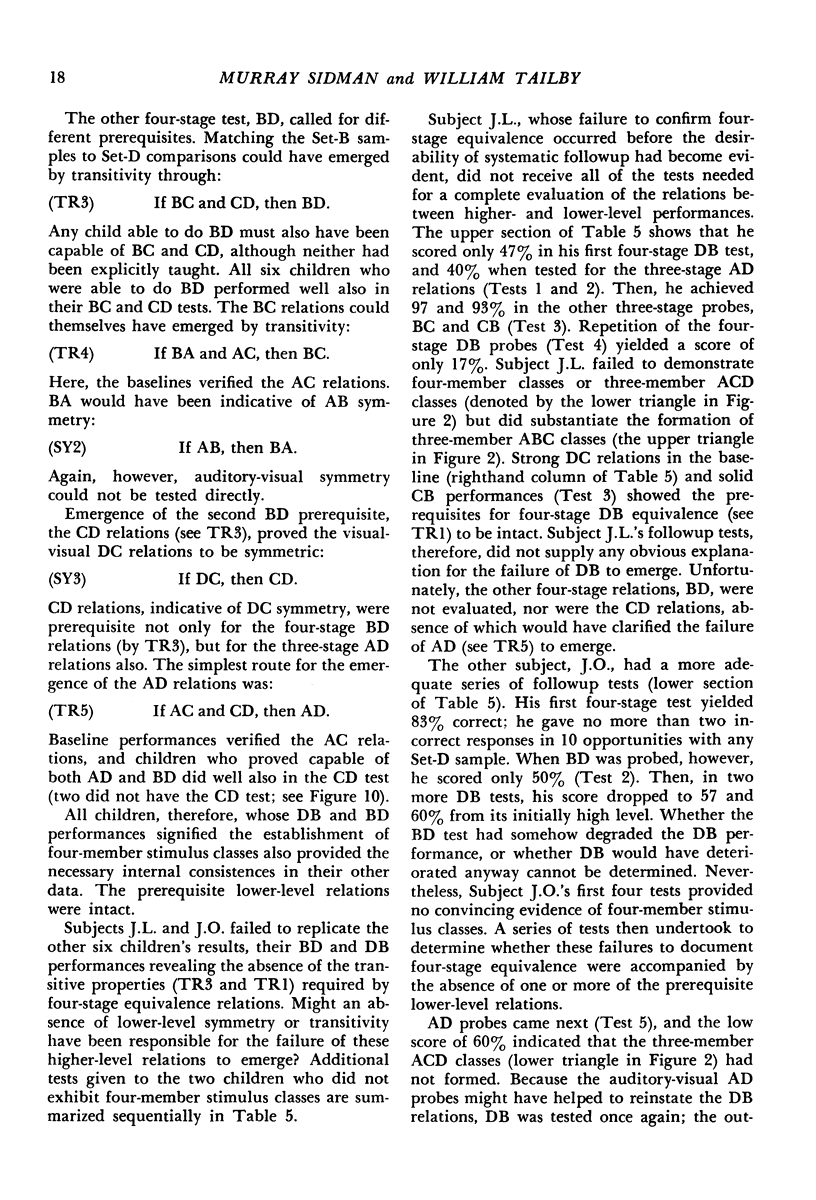
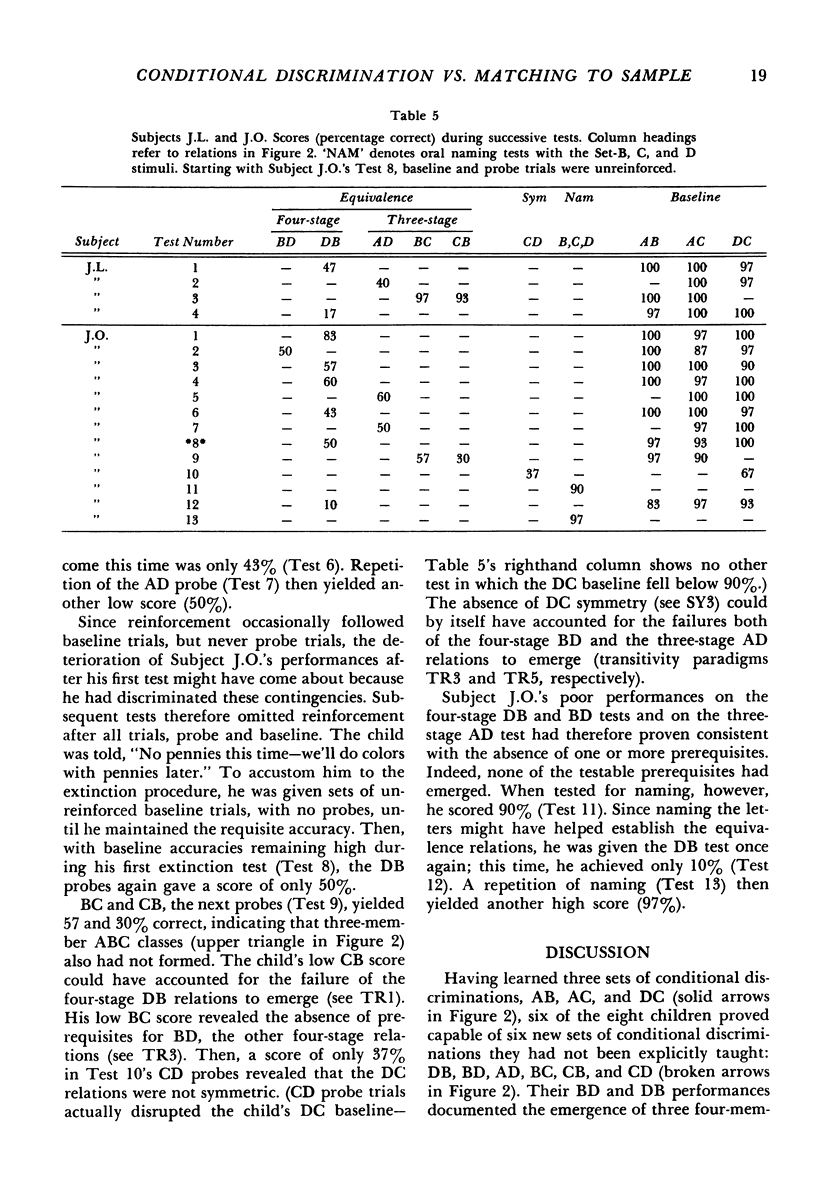
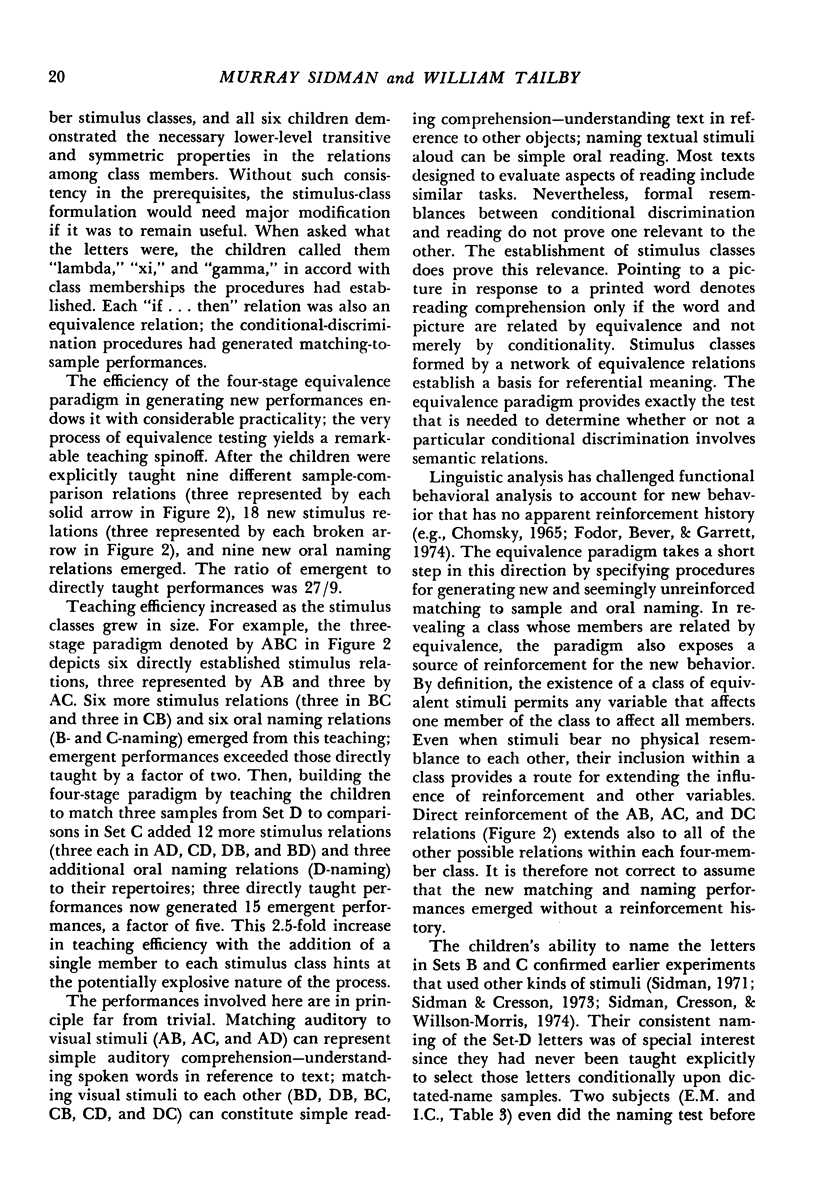
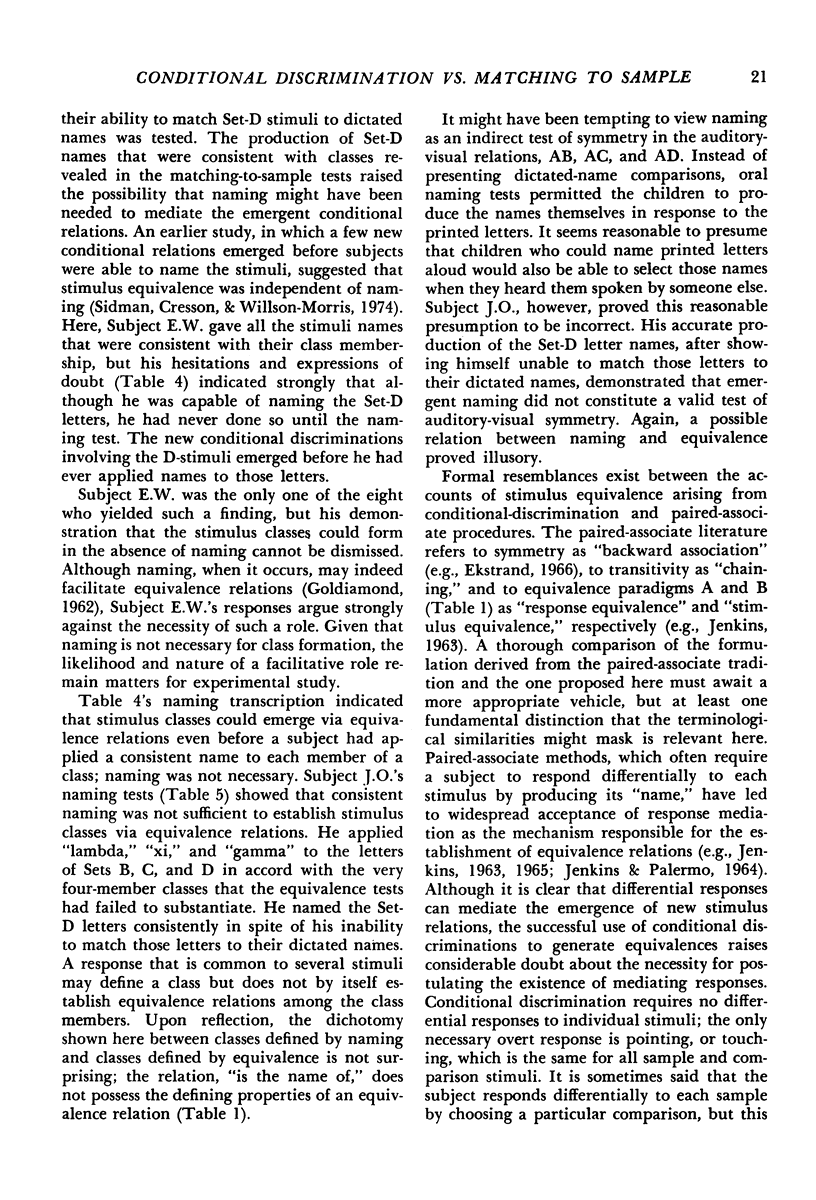
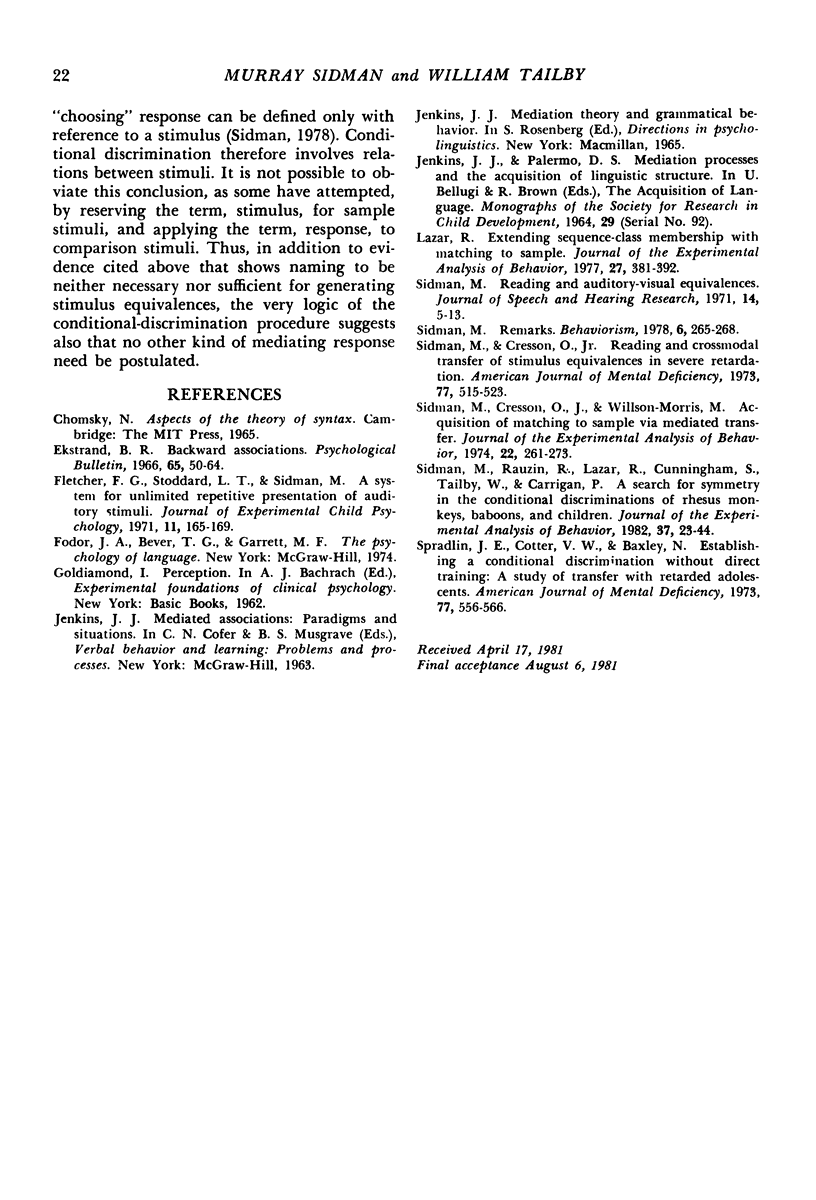
Selected References
These references are in PubMed. This may not be the complete list of references from this article.
- Ekstrand B. R. Backward associations. Psychol Bull. 1966 Jan;65(1):50–64. doi: 10.1037/h0022645. [DOI] [PubMed] [Google Scholar]
- Lazar R. Extending sequence-class membership with matching to sample. J Exp Anal Behav. 1977 Mar;27(2):381–392. doi: 10.1901/jeab.1977.27-381. [DOI] [PMC free article] [PubMed] [Google Scholar]
- Sidman M., Cresson O., Jr Reading and crossmodal transfer of stimulus equivalences in severe retardation. Am J Ment Defic. 1973 Mar;77(5):515–523. [PubMed] [Google Scholar]
- Sidman M., Cresson O., Jr, Willson-Morris M. Acquisition of matching to sample via mediated transfer. J Exp Anal Behav. 1974 Sep;22(2):261–273. doi: 10.1901/jeab.1974.22-261. [DOI] [PMC free article] [PubMed] [Google Scholar]
- Sidman M., Rauzin R., Lazar R., Cunningham S., Tailby W., Carrigan P. A search for symmetry in the conditional discriminations of rhesus monkeys, baboons, and children. J Exp Anal Behav. 1982 Jan;37(1):23–44. doi: 10.1901/jeab.1982.37-23. [DOI] [PMC free article] [PubMed] [Google Scholar]
- Sidman M. Reading and auditory-visual equivalences. J Speech Hear Res. 1971 Mar;14(1):5–13. doi: 10.1044/jshr.1401.05. [DOI] [PubMed] [Google Scholar]
- Spradlin J. E., Cotter V. W., Baxley N. Establishing a conditional discrimination without direct training: a study of transfer with retarded adolescents. Am J Ment Defic. 1973 Mar;77(5):556–566. [PubMed] [Google Scholar]


